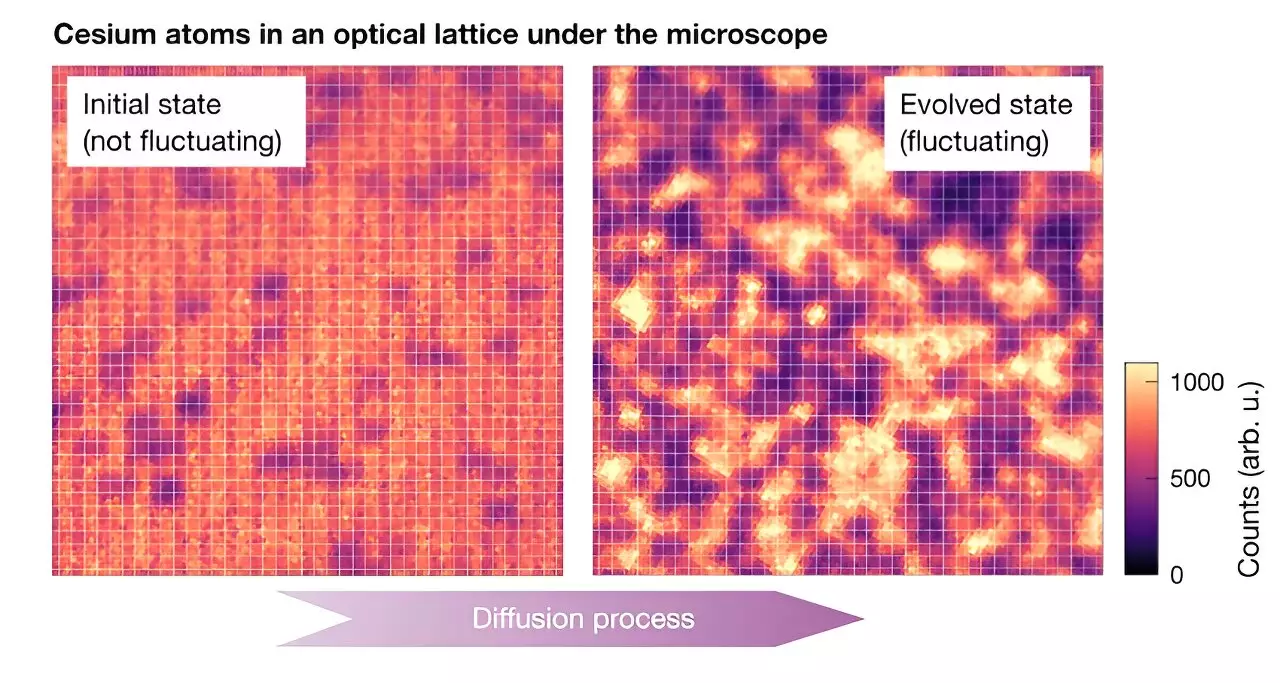The exploration of quantum systems is a realm that merges the complexities of physics with the subtleties of thermal mechanics. Researchers often grapple with the challenge of grasping the behavior of numerous interacting particles, especially when considering the convoluted interactions that occur in large quantum systems. Recently, a collaborative study involving teams from Ludwig-Maximilians-Universität, Max-Planck-Institut für Quantenoptik, Munich Center for Quantum Science and Technology, and the University of Massachusetts brought forth insights into the framework of Fluctuating Hydrodynamics (FHD) as a means to analyze these complex systems. Their findings, published in *Nature Physics*, open new avenues for understanding equilibrium fluctuations in quantum mechanics.
At the heart of the research lies the use of a quantum gas microscope specifically designed to track and manipulate ultracold atoms. The idea is akin to attempting to predict the future behavior of a multitude of entities within a confined space. Julian Wienand, one of the contributing authors, likens the process to predicting the movements of a large number of particles within a box. While classical mechanics provides a foundation for understanding particle interactions, the sheer scale of data presented by hundreds or thousands of particles can overwhelm traditional computational methods. As a solution, the researchers propose an innovative approach through the application of hydrodynamics theory.
Fluctuating Hydrodynamics leverages principles from classical hydrodynamics while incorporating the stochastic nature of quantum systems. The researchers posited that chaotic quantum systems could be interpreted using a framework that envisions the whole system as a continuous density field influenced by rapid particle movement. This conceptual leap allows for simple differential equations to describe the behavior of the system, despite the inherent randomness introduced by microscopic fluctuations.
Wienand articulates that the resulting integration of these deviations—envisioned as white noise—affords physicists a powerful toolset for managing the complexity of quantum interactions. By recognizing that a few critical parameters, including a diffusion constant, govern the dynamics of large systems, the researchers could effectively model and predict the behavior of chaotic quantum particles.
To validate their theoretical assertions, the research team engaged in a series of quantum simulations featuring cesium atoms (133Cs) trapped in an optical lattice. Under rigorous conditions, they generated a controlled environment whereby the atoms could be tracked and their interactions measured with high precision. By manipulating factors such as the lattice depth, the scientists observed a phase transition that led the system to thermalize and reveal patterns of fluctuation.
This process was crucial in demonstrating that fluctuations, observed as the diffusion process evolved, aligned with the predictions made by FHD theory. The results further underscored the relationship between microscopic behaviors and macroscopic observations, creating a comprehensive picture of the dynamics at play.
The implications of this research extend far beyond the confines of a laboratory setting. The researchers emphasized that their findings showcase a significant overlap between classical and quantum understandings of chaotic systems. Essentially, the FHD framework provides the capacity to describe complex quantum mechanics with striking simplicity. Notably, they uncovered that the diffusion constant emerges as a fundamental equilibrium property, allowing for the characterization of quantum systems even when they exist far from equilibrium.
This revelation challenges conventional understandings, suggesting that intricate quantum behaviors can yield to classical descriptions under certain conditions. The relationship between equilibrium and out-of-equilibrium states observed in their simulations not only provides insight into the dynamic nature of quantum systems but also paves the way for future explorations about how these systems can be studied and modeled with greater efficacy.
Recognizing the potential of FHD in quantum physics, Wienand and his colleagues are poised to delve deeper into this fascinating area of study. Their future research aims to probe into how fluctuations behave in systems that do not follow standard thermalization protocols. Additionally, they plan to explore whether the framework can be adapted to integrate more complex observables and assess chaotic systems in varied contexts.
By continuing to refine these theoretical constructs and experimental applications, the team is set to further unravel the mysteries of quantum many-body dynamics. Each advancement contributes toward a more comprehensive understanding of the quantum world, ultimately leading to advancements in quantum technology and broader scientific inquiry.
The pioneering work presented by these researchers signifies a notable stride in bridging theoretical physics with practical experimentation, elevating our comprehension of the intricate cycles governing chaotic quantum systems. As they navigate the depths of this research frontier, they offer not just findings, but a framework through which a greater understanding of quantum behaviors can be achieved.

